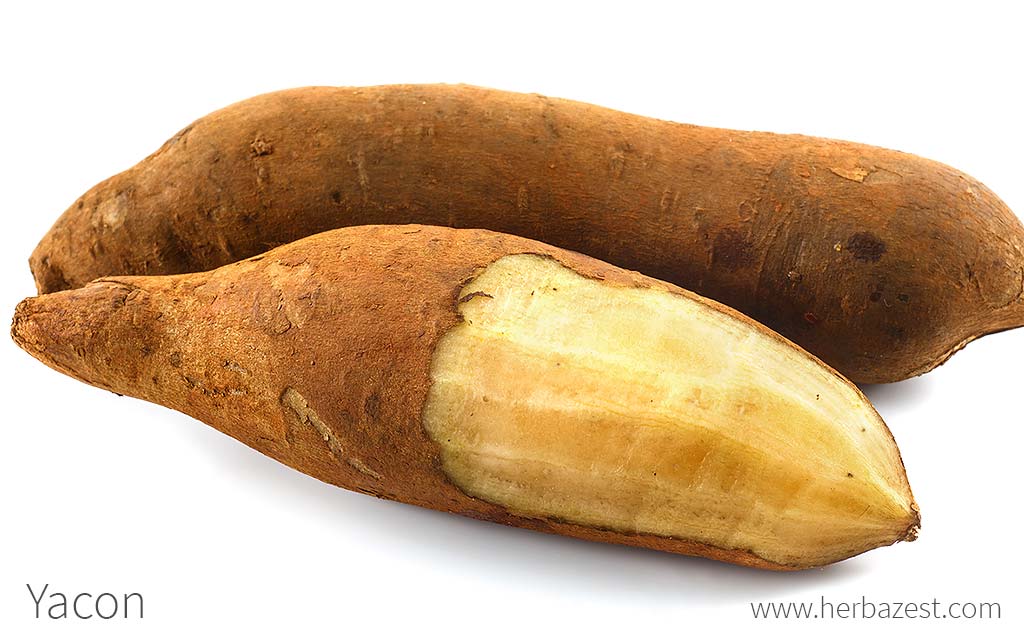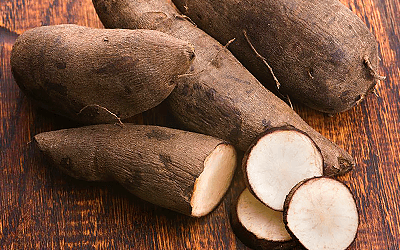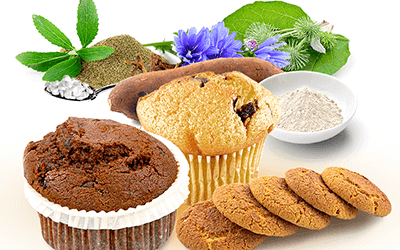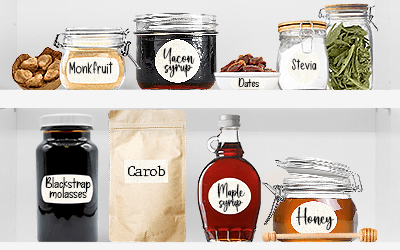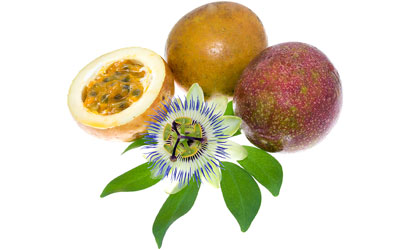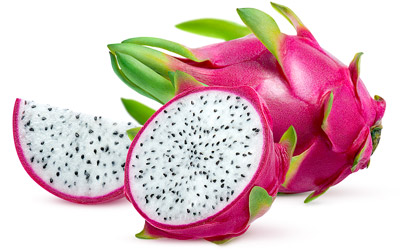Native to the subtropical, mountainous regions of the South American Andes, the first large concentrations of yacon plants is thought to have naturally grown near human civilizations of the region. This is due to the species preferring areas free of vegetation, similar to the ones indigenous Americans settled using slash-and-burn agricultural methods on steep mountainous slopes. Although yacon has been consumed by Andean highlanders for centuries, it wasn't until the 1980s that it received the attention of the scientific community, and its medicinal properties were investigated and put into value.
Yacon Medicinal Properties
- Medicinal action Digestive, Hypoglycemic
- Key constituents Inulin, fructooligosacchrides (FOS), soluble fiber
- Ways to use Capsules, Hot infusions/tisanes, Food, Powder, Syrup, Dried
- Medicinal rating (2) Minorly useful plant
- Safety ranking Safe
Health Benefits of Yacon
In its native lands, yacon is traditionally used as a food product. So, research on its medicinal uses is only just beginning. Being one of the best sources of low calories and natural sugars, yacon health benefits are mainly based on its hypoglycemic and digestive activities, which have found the following medicinal uses:
Managing diabetes. The yacon tubers help manage diabetes by reducing glucose levels, and are often used as an alternative to cane sugar and processed sugar.
Improving digestion. The compounds in yacon root also have a prebiotic effect, which helps with digestion and improves colon health.
Additionally, the use of yacon root for weight loss diets is becoming increasingly popular since it is a natural sugar replacement, and it is believed to help reduce inflammation. Although further studies are necessary, yacon properties have also shown potential for treating kidney problems and rejuvenating skin.
How It Works
Yacon is rich in inulin and fructooligosaccharides (FOS), both of which have been recognized for enhancing the growth of good bacteria in the gut. This is why the yacon tuber is considered as a prebiotic sugar replacement. The inulin it contains has a sweet taste, but the body is unable to digest it. Therefore, it passes through the digestive system, providing a feeling of fullness without adding any calories or being transformed into glucose, which makes it ideal for both weight management and diabetes.
The yacon root is a good source of soluble fiber.
Herbs that are consumed as alternative sweeteners are stevia and lucuma, whereas cinnamon and goldenberry also contribute to reduce blood sugar levels, thus helping manage hyperglycemia and diabetes. Herbs that support colon health are psyllium and flax.
Yacon Side Effects
Yacon is safe when eaten as part of a balanced diet. Few to no side effects have been observed in studies aside from mild digestive disturbances due to overconsumption.
Cautions
People with irritable bowel syndrome (IBS) or small intestinal bacterial overgrowth (SIBO) should be aware that consuming yacon, as well as any other source of fructooligosaccharides (FOS), may cause them gastrointestinal discomfort.
How to Consume Yacon
- Edible parts Leaves, Root
- Edible uses Sweetener
- Taste Sweet
The most common way to consume yacon root in its native region has always been raw, due to its sugary-sweet flavor and pleasant crunch. In places where the Andean tubers are not available, yacon can be found in the form of natural pure powder and dried chips as well as in supplemental forms, such as capsules, tea bags, and syrups.
Natural Forms
Infusion. This is a popular way of consuming yacon to support blood sugar balance and digestive health.
- Dried. In this form, as raw chips, yacon can be eaten as a tasteful snack or brewed into an herbal tea for lowering glucose, supporting digestion, and reducing food cravings.
Powder. After being dried and powdered, yacon can be added to juices, smoothies, and even baked goods in order to increase fiber content and reduce sugar intake.
Herbal Remedies & Supplements
Syrup. This herbal preparation provides yacon root in concentrated amounts for beneficial control of sugar intake and diabetesmanagement.
Capsules. As a daily supplement, for blood sugar regulation or digestive purposes, yacon capsules are a widely available option.

Buying
- Where to buy Supermarkets, Big online retailers, Specialized health stores, Online herb stores, Organic markets, Online health stores
Yacon root products are not yet widely available; however, some health food sections of grocery stores carry pure powder, syrup, and tea made of the yacon plant. Fresh and dried varieties are seldom found in certain Latin American markets throughout the year. So far, the best way to buy yacon, in both natural forms and supplements, is through online retailers.
Natural Form
Yacon tubers are usually ground and can often be found as a raw, pure powder, which can be used as a sugar substitute for cakes, cookies, and other baked goods. It can also be added to beverages, smoothies, and shakes.
Pure yacon powder can be found in some grocery stores and health food stores as well as via online retailers. Furthermore, the dried roots of yacon are available as chips in certain organic markets.
Herbal Remedies & Supplements
Yacon capsules and tablets offer a consistent dose of inulin, which be taken as both a prebiotic and a hypoglycemic agent. Online retailers offer the most variety of brands, which are available at a range of price points. Likewise, yacon tea and syrups can be easily found through online retailers and in some organic stores or health food stores.
Since the amount of vitamins and active compounds can vary depending on the brand, it is recommended to read the labels carefully and look for certified organic products, ideally processed and packaged in their places of origin.
Growing
- Life cycle Perennial
- Harvested parts Roots
- Light requirements Full sun
- Soil Medium (loam), Well-drained
- Soil pH 6.6 – 7.3 (Neutral)
- Growing habitat Temperate climates, Subtropical regions, Andean region
- USDA Plant Hardiness Zones 7a (From −17.8 °C (0 °F) to −15 °C (5 °F)), 7b (From −15 °C (5 °F) to −12.2 °C (10 °F)), 8a (From −12.2 °C (10 °F) to −9.4 °C (15 °F)), 8b (From −9.4 °C (15 °F) to −6.7 °C (20 °F)), 9a (From −6.7 °C (20 °F) to −3.9 °C (25 °F)), 9b (From −3.9 °C (25 °F) to −1.1 °C (30 °F)), 10a (From −1.1 °C (30 °F) to +1.7 °C (35 °F)), 10b (From +1.7 °C (35 °F) to +4.4 °C (40 °F)), 11a (From +4.4 °C (40 °F) to +7.2 °C (45 °F)), 11b (From +7.2 °C (45 °F) to +10 °C (50 °F))
- Planting time Early spring
- Plant spacing average 0.9 m (2.95 ft)
- Growing time 5 months
- Propagation techniques Cuttings
Subtropical environments produce the best yields of yacon root. High altitudes between 3,000 - 11,500 feet (900 - 3,500 m) provide cold nights that spike the yacon plant propagation, but they are not necessarily required for a successful yield, and it is possible to grow this species in many different climates.
Growing Guidelines
Yacon can survive chills as low as 30°F (-1°C) and heat as high as 104°F (40°C).
This species will thrive in a sunny area, with a temperate climate.
Yacon plants are propagated from cuttings obtained from the “crown, ” a ginger-like root structure where the edible tubers emanate.
At least three inches (8 cm) between the plants are necessary for them room to grow comfortably.
It requires a regular water supply and a fertile soil with a good drainage.
It is best to plant yacon at the beginning of the rainy season or springtime months.
Yacon is a fast growing crop, and will be ready to harvest in about five months.
- This Andean tuber is virtually free of pests and diseases.
Additional Information
- Other uses Animal feed
Plant Biology
Yacon (Smallanthus sonchifolius) is a flowering perennial that can reach three feet (1 m) tall and produces large, broad leaves and star-shaped blooms, with small yellow petals, the latter of which only appear briefly at the end of the growing season. The long, tuberous roots are where the major concentration of nutrients lies, and they can reach up to 10 inches (25 cm) in length by four inches (10 cm) in diameter, with striated colors.
Classification
Yacon (Smallanthus sonchifolius), belongs to the Asteraceae, or sunflower family, which contains over 23,000 species spread out over 1,620 genera. The family can be found throughout the world and contains numerous different economically-important herbs, including, artichoke (Cynara scolymus), chicory (Cichorium intybus), dandelion (Taraxacum officinale), and lettuce (Lactuca sativa). Many of its species are popular in the herbal tea world.
Related Species and Varieties of Yacon
The genus Smallanthus is comprised of about 21 species of perennial herbs, mostly native to southern Mexico, Central America, and the Andes in South America. However, six species are very similar to S. sonchifolius and can be classified as a type of 'yacon group': S. connatus, S. macroscyphus, S. riparius, S. meridensis, S. suffruticosus, and S. siegesbeckius.
There are thought to be approximately 20 - 30 varieties of yacon plants grown throughout Central and South America today, though their differences are generally as slight as the color of the root's skin and flesh, which can range from cream to red to purple.
Historical Information
As early as 1,000 CE, the yacon plant was used as a food source and herbal medicine as well as a symbolic offering during religious ceremonies by indigenous peoples of the Peruvian and Bolivian Andes. The Incan and pre-Incan people cultivated yacon and attached spiritual significance to the crop, which appears as a motif in pottery and textiles.
Nevertheless, the plant did not reach Europe until the 20th century, enjoying brief interest in Italy that soon died out with the Second World War. In the 1980s, New Zealand and Japan became enthusiastic about its nutritional value, where it remains popular to this day.
The yacon plant has also been successfully cultivated in Germany, France, and the United States, though the Andean roots are not yet widely popular in these countries. In 1993, yacon was introduced into the Czech Republic from New Zealand and, more recently, it has also been introduced to Russia.
THE COMMON NAME FOR YACON IS DERIVED FROM THE QUECHUA WORD "LLAQON", WHICH MEANS "WATERY," REFERRING TO THE RICH WATER CONTENT OF THE ANDEAN TUBER.
Economic Data
Although yacon is not as widely known as other tubers, it still generates demand around the world. Japan is the top consumer of the plant, closely followed by Brazil. Commercial cultivation is alive and well in those countries. Peru is the world's top producer, where 18 out of 20 regions of the country cultivate the yacon plant on a large scale, exporting it to places like the U.S., New Zealand, and Korea at a free on board value of US$ 633,000 in 2010 alone.
Other Uses of Yacon
Fodder. The whole yacon roots are sometimes used as livestock fodder for cattle and sheep in local areas of growth.
Sources
- Andean Roots and Tubers: Ahipa, Arracacha, Maca and Yacon, p. 204 - 208
- Biomedical Papers of the Medical Faculty of the University Palacky, Olomouc, Czech Republic, Smallanthus sonchifolius and Lepidium meyenii - prospective Andean crops for the prevention of chronic diseases, 2003
- Clinical Nutrition Journal, Yacon syrup: beneficial effects on obesity and insulin resistance in humans, 2009
- European Journal of Nutrition, Antioxidant Activity of Extracts from the Leaves of Smallanthus sonchifolius, 2003
- International Trade Centre, The North American Market for Natural Products: Prospects for Andean and African Products
- Lost Crops of the Incas, pp. 114-123
- The American Journal of Clinical Nutrition, Efficacy, safety, and tolerability of fructooligosaccharides in the treatment of irritable bowel syndrome, 2000
- The British Journal of Nutrition, Study of the effect exerted by fructo-oligosaccharides from yacon (Smallanthus sonchifolius) root flour in an intestinal infection model with Salmonella Typhimurium, 2013
- Universidad Nacional Agraria La Molina, Programa de Investigación y Proyección Social en Raíces y Tuberosas: Yacón
- University of California, Growing Andean root crops: Yacón
- University of Maryland, Edibles & Tropicals: What’s New in Greenhouse Production
- International Potato Center, Yacon: Fact Sheet


